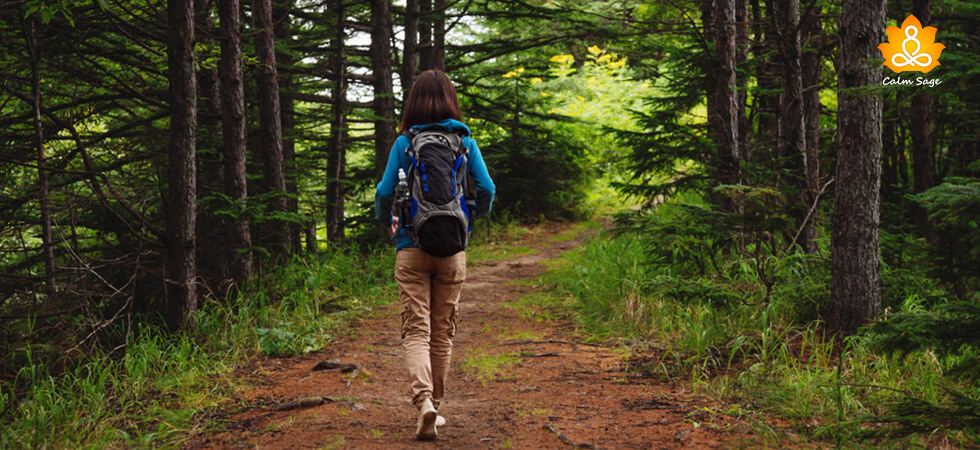Understanding Xylophobia: The Irrational Fear Of Wooded Areas

Have you ever seen a classic “cabin in the woods” movie but instead of being scared of the horror or the thriller part, you were more apprehensive of the “wooded area” on the screen? If yes, then you might fear wooded areas or forests, also called “Xylophobia”.
Xylophobia, also known as Hylophobia, is an irrational fear of wooded areas or forests. This fear can be linked with other irrational fears such as animal-specific fears or the fear of the night.
Just like other phobias, xylophobia can cause intense panic and anxiety when you think about forests or go near one. If left unaddressed and untreated, this fear of wooded areas can interfere with your ability to function and may make you want to stay indoors to avoid going out and encountering a road surrounded by woods.
Let’s explore more about the symptoms of xylophobia (the fear of wooded areas), what causes this fear, and how it can be treated.
Symptoms Of Xylophobia
The symptoms of xylophobia can be the same as other irrational fears. You may experience physical discomfort and psychological distress when you think about forests or go near any wooded areas.
Here are some common xylophobia symptoms you should be aware of:
Physical Symptoms
- Chest pain
- Feeling goosebumps
- Dizziness
- Nausea
- Increased heart rate
- Rapid breathing
- Shortness of breath
- Trembling
- Sweating
Psychological Symptoms
- Extreme anxiety
- Feelings of dread
- Feeling distressed
- Experiencing panic attacks
- Feeling of dissociation
- Feeling a sense of dying
If you live in urban areas, then there’s a chance that you may not encounter wooded areas and forests that often, however, if you ever visit out of town or go towards the rural areas, then your fear may become prominent.
If the fear of wooded areas is beginning to affect your normal functioning, then it can make it harder for you to commute to work (if you need to drive through a wooded area), avoid social situations if they are located near wooded areas, and even struggle to leave the house because of the fear. This, eventually, can lead to social isolation and loneliness.
What Causes Xylophobia?
While the exact causes of xylophobia may be unknown, some factors can contribute to the fear including genetics, family background, and even traumatic experiences. If you have a family member with a phobia or other anxiety disorders, then it can also increase your chances of developing a phobia or anxiety disorder.
Other phobias that can be connected with xylophobia, the fear of wooded areas, can include;
Animal-Related Phobias: Animal attacks are something we’re all concerned about. However, if you are constantly concerned about even the smallest woodland creatures attacking you, then it could also contribute to your xylophobia.
Fear of the Dark: Another phobia associated with xylophobia can be the fear of the dark or night. Wooded areas are often dark, even during the day, so if you have a fear of the dark then it could lead you to develop or worsen your fear of the wooded areas or forests.
Fear of the Unknown: You never know what’s in the woods so this uncertainty can also become a cause of xylophobia. Unusual sights, smells, and sounds can often make you feel off-kilter in the woods, creating fear. If you’re not used to the feel of wooded areas or forests, then you’re likely to fear what lies beyond the woods, increasing your apprehension for the forest.
How Is Xylophobia Diagnosed?
You can’t find “xylophobia” in DSM-5, but if you meet the criteria for specific phobias, then a professional may diagnose you with xylophobia.
A specific phobia needs to meet these criteria;
- Extreme and unreasonable feelings of fear
- Intense symptoms of anxiety
- Avoiding the situation that causes fear (in this case, wooded areas or forests), or
- Enduring the situation with severe distress
A professional may also need to examine how this fear is interfering with your daily life including work, school, or social activities. If these activities are affected by your fear, then it could be considered a specific phobia. The symptoms of phobia should also be present for at least 6 months or more to be diagnosed with a specific phobia.
Can Xylophobia Be Treated?
With the right combination of psychotherapy, medication, and self-help strategies, xylophobia can be treated. The treatment for specific phobias can include:
1. Cognitive-Behavioral Therapy (CBT)
CBT is one of the most recommended treatment approaches for specific phobias. This therapy focuses on identifying the negative thoughts that contribute to your feelings and symptoms of fear. With a therapist’s help, you can work on replacing these negative thoughts with positive ones and also come up with helpful coping strategies to deal with the phobia.
2. Exposure Therapy
Another approach to treating phobias is exposure therapy. Under this therapy, you are slowly exposed to your fear, in our case a wooded area or forest, triggering variations of the fear. You will be asked to use relaxation techniques and helpful breathing exercises to calm your anxious mind and body.
3. Medications
If your symptoms of the phobia are extreme, then a professional may prescribe medications along with therapy to help you calm your symptoms.
What Next?
When you know and understand your fear and its causes, it can help you deal with your phobia. Before you step into a forest, make sure you research the forest first. Learn to identify the animals, plants, and routes that you’re likely to encounter there. Make sure you keep with yourself a reliable map and GPS locator.
If you prepare an emergency plan beforehand then you can let a trusted one know where you’re going so that if you fail to work through it, a friend can come and help you. Make sure you keep supplies, food, and a first aid kit readily available when you go out to the forest.
The important thing to remember is to take small steps. Try to consult a professional about the steps you’re ready to take and then take them. Make sure to not leave your phobia unaddressed or untreated.
I hope this article helped you understand xylophobia (the fear of wooded areas or forests). For more, you can write to us at info@calmsage.com or DM us on social media.
You can also share your thoughts with us in the comments section below.
Take Care!




















